 Facebook
Facebook
 X
X
 Instagram
Instagram
 TikTok
TikTok
 Youtube
Youtube
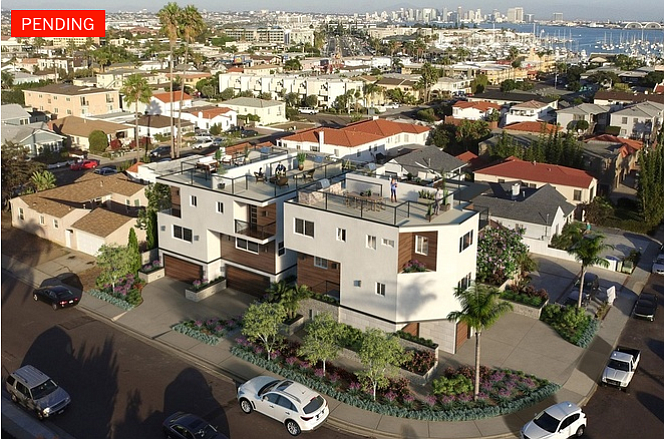
The housing project on the corner of Emerson and Evergreen streets in the Roseville neighborhood of Point Loma has had more ups and downs and twists and turns than a roller coaster. The fourplex has towered literally and figuratively over Roseville residents, oftentimes leading to more questions than answers. The most recent showdown on August 31 was no exception.

The city planning commission meeting was prompted by an appeal filed in July to overturn a June decision to approve a tentative map waiver allowing the units to be sold instead of maintaining them as renter units.
Confusing, since signage at the site in 2016 indicated selling them was always the plan. The realtor with signs posted last summer has since posted listings online.
The saga began in June 2016, when a neighbor noticed a fourth floor had gone up on the fourplex. Residents said the covenant of 1972's Prop D 30-foot height limit was being disregarded. Residents planned a protest while the builder planned to bring in enough dirt to turn the above-ground garages into subterranean parking.
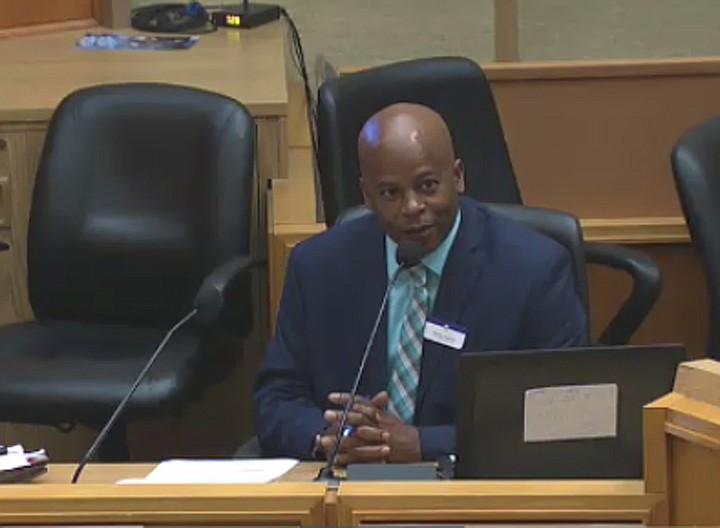
The builder also got cute with a Reader article about the project — using it to tout how high they could build.
The community uprising led to a stop-work order and promise from the mayor that he would get to the bottom of things. This led to a September 2016 hearing about a possible solution — a hearing that local planning group members were miffed they hadn't been notified about.
In October 2016, the city council voted in favor of adding a footnote to the municipal code to keep it at 30 feet. The footnote left some asking if it would do anything beyond referring developers to already-in-place measurement directions. The city promised it actually reduced zoning height to 30 feet in specified zones.
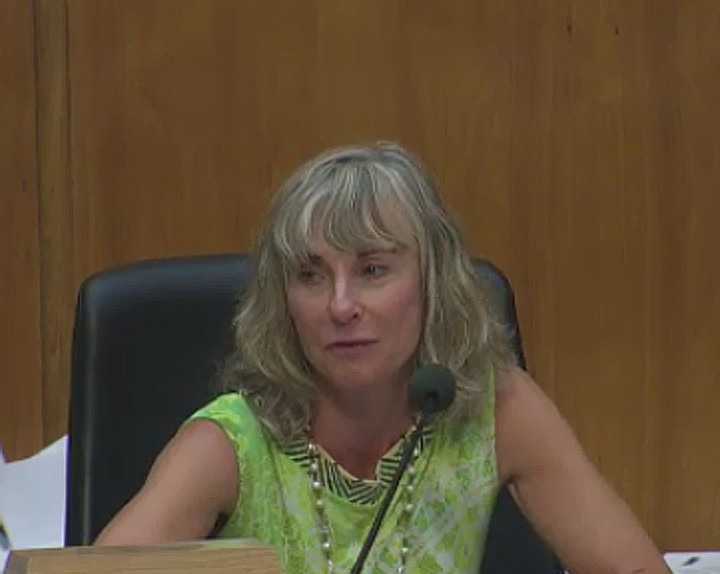
The fourth floor finally came down in October 2016 because it exceeded the floor-to-lot-area ratio — not height. The city said the duplexes were allowed to be 40 feet. Even sans the fourth floor, the building still appeared to be 40 feet tall to neighbors.
At the August 31 planning commission hearing, city project manager Derrick Johnson tried to keep everyone focused on the task at hand: denying the appeal and granting the applicant a map waiver. Even so, Johnson spent the majority of his time rehashing the past in the name of asking the planning commission to ignore it.
Much of the back-and-forth concerned the controversy surrounding the project: residents said the situation could have been avoided if they'd been clued in before construction began. The city decided public input wasn't necessary as the project was deemed the simplest to process (Process 1 is the simplest and Process 5 the most complicated). Meanwhile, the map waiver is a Process 3, which requires public input.
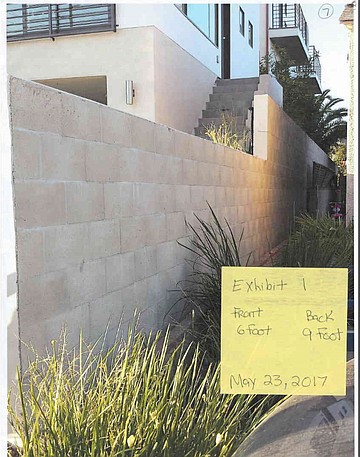
Johnson tried to discredit the appeal as he reassured everyone that while the project had had issues, they'd all been resolved. Being in compliance is all important since being out of compliance is a reason to deny the map waiver.
As Johnson addressed each appeal issue raised, he repeated that any issues related to building permits were irrelevant.
Seven members of the public were there in favor of the map waiver and three were in opposition. The former appeared to be hired guns or known players involved in the project; the latter were residents.
Before public testimony, commissioner James Whalen asked, "I just want to make sure — did this applicant get away with anything?"
"I would say emphatically no," answered Johnson.
"It makes developers look bad, and I'll just leave it at that," replied Whalen.
Commissioner Vicki Granowitz disclosed that during her previous time on a planning committee, they routinely voted against map waivers "because we felt like they were a loophole in the land development code that allowed people to get approval for apartments and then convert them to condos so that communities didn't get the chance to give input." She stated she would be neutral in this case.

Attorney Gina Austin spoke on behalf of the project applicant. "We're not getting away with anything, Commissioner Whalen. We've worked very hard because there has been so much community feedback to make sure we're consistent. So when construction changes came in, we removed the top floor. That was something that was an oversight, it wasn't intentional; it's simply we were over the [floor area ratio]." She blamed the builder for building the retaining walls too high and said it was corrected as soon as they were notified.
Austin pointed to numerous other map waivers happening in the area and said they are needed to keep development costs down and ultimately housing prices down. (Some could argue it's to keep profits up since the condos are being advertised for close to $1 million each.)
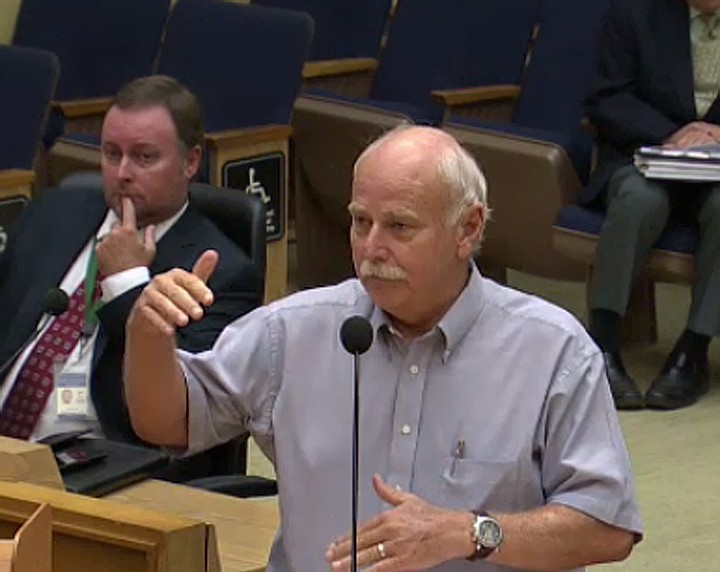
Someone in the know said while map waivers do cut permitting time in half and cost less — that time saved would have been for public review. "If both apartment and condominium developments were handled under the same procedures, the map-waiver tool would not do developers any good."
Jonathan Chapin lives next to the fourplex. Chapin talked fast to get through all he'd prepared to say in under six minutes. He pointed to the community plan that states developments out of scale in terms of building or design should be avoided. "Look at that photo and ask me if that is in scale."
Chapin said the duplex from the Emerson side measured at 35.5 feet, not the 33 feet the city claims. Johnson confirmed the 33 feet and said the project received certification verifying it "complies with the Proposition D height limitation of 30 feet."
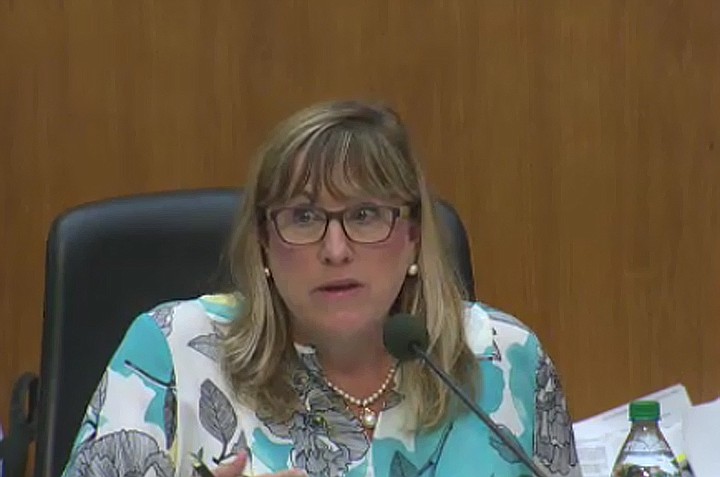
Chapin contends the retaining walls are still too tall even though the builder lowered them during the appeal period — which he said is prohibited (work commenced July 18 and finished on about August 4).
Chapin shared photographs and measurements of the graduated retaining wall. On May 23, before being lowered, Chapin measured the back of the wall at 9 feet and the front at 6 feet. On August 29, after being lowered, Chapin measured the back at 6.5 feet and the front at 46 inches (almost 4 feet); they are required to measure 6 feet and 3 feet, respectively.
Larry Gustafson, a 65-year Point Loma resident, said the only reason the fourth floor finally came down was because 300 residents appealed to the mayor — otherwise, it would be 45 feet now. Gustafson said he first met Chapin when he came upon him taking measurements. He confirmed Chapin's measurements.
Commission chair Stephen Haase asked the city attorney if work done during the appeal period was an issue. The short answer was no — as long as it wasn't map-waiver related.
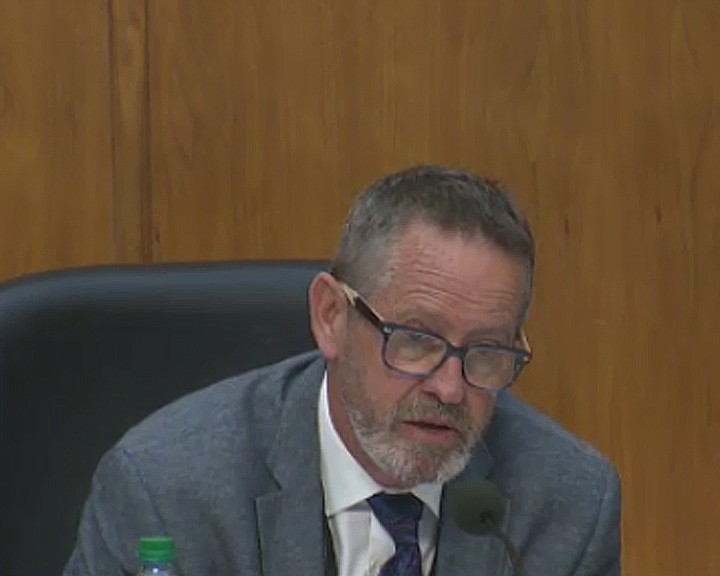
Commissioner Doug Austin said, "I get what the community is saying because this is a project which tried to break the rules, bend the rules. It’s not particularly attractive, it's out of scale, it doesn't do anything to try to fit the scale." Austin said he plans to do some homework on Prop D; his current understanding differs from city staff, he said.
Whalen said he wanted to get the issue straight about the retaining-wall height because, "I don't want to cut these people any slack at all."
City inspector Sean Jones, a bit flustered, said, "The front wall or the lowest section over there. I'll be more than happy to go back and measure it again. I didn't measure the lowest section, so the lowest section is in question."

Gina Austin, the lawyer representing the building owner, said the lowest section was measured at 3 feet and declared that "the building stays regardless of whether or not you approve the map waiver — it does either way."
Haase forcefully responded that he would not debate that point, he needed to be sure the project was compliant before rendering a decision.
Commissioner Susan Peerson said the community needs to understand that 30 feet can add up to more than 30 feet, as it depends on allowed zoning calculations. Peerson said she won't be supporting the mapping waiver unless she's assured the project is in compliance.
Haase requested that city staff verify everything and for that same staff to be present at the hearing to be continued on October 5.


The housing project on the corner of Emerson and Evergreen streets in the Roseville neighborhood of Point Loma has had more ups and downs and twists and turns than a roller coaster. The fourplex has towered literally and figuratively over Roseville residents, oftentimes leading to more questions than answers. The most recent showdown on August 31 was no exception.

The city planning commission meeting was prompted by an appeal filed in July to overturn a June decision to approve a tentative map waiver allowing the units to be sold instead of maintaining them as renter units.
Confusing, since signage at the site in 2016 indicated selling them was always the plan. The realtor with signs posted last summer has since posted listings online.
The saga began in June 2016, when a neighbor noticed a fourth floor had gone up on the fourplex. Residents said the covenant of 1972's Prop D 30-foot height limit was being disregarded. Residents planned a protest while the builder planned to bring in enough dirt to turn the above-ground garages into subterranean parking.

The builder also got cute with a Reader article about the project — using it to tout how high they could build.
The community uprising led to a stop-work order and promise from the mayor that he would get to the bottom of things. This led to a September 2016 hearing about a possible solution — a hearing that local planning group members were miffed they hadn't been notified about.
In October 2016, the city council voted in favor of adding a footnote to the municipal code to keep it at 30 feet. The footnote left some asking if it would do anything beyond referring developers to already-in-place measurement directions. The city promised it actually reduced zoning height to 30 feet in specified zones.

The fourth floor finally came down in October 2016 because it exceeded the floor-to-lot-area ratio — not height. The city said the duplexes were allowed to be 40 feet. Even sans the fourth floor, the building still appeared to be 40 feet tall to neighbors.
At the August 31 planning commission hearing, city project manager Derrick Johnson tried to keep everyone focused on the task at hand: denying the appeal and granting the applicant a map waiver. Even so, Johnson spent the majority of his time rehashing the past in the name of asking the planning commission to ignore it.
Much of the back-and-forth concerned the controversy surrounding the project: residents said the situation could have been avoided if they'd been clued in before construction began. The city decided public input wasn't necessary as the project was deemed the simplest to process (Process 1 is the simplest and Process 5 the most complicated). Meanwhile, the map waiver is a Process 3, which requires public input.

Johnson tried to discredit the appeal as he reassured everyone that while the project had had issues, they'd all been resolved. Being in compliance is all important since being out of compliance is a reason to deny the map waiver.
As Johnson addressed each appeal issue raised, he repeated that any issues related to building permits were irrelevant.
Seven members of the public were there in favor of the map waiver and three were in opposition. The former appeared to be hired guns or known players involved in the project; the latter were residents.
Before public testimony, commissioner James Whalen asked, "I just want to make sure — did this applicant get away with anything?"
"I would say emphatically no," answered Johnson.
"It makes developers look bad, and I'll just leave it at that," replied Whalen.
Commissioner Vicki Granowitz disclosed that during her previous time on a planning committee, they routinely voted against map waivers "because we felt like they were a loophole in the land development code that allowed people to get approval for apartments and then convert them to condos so that communities didn't get the chance to give input." She stated she would be neutral in this case.

Attorney Gina Austin spoke on behalf of the project applicant. "We're not getting away with anything, Commissioner Whalen. We've worked very hard because there has been so much community feedback to make sure we're consistent. So when construction changes came in, we removed the top floor. That was something that was an oversight, it wasn't intentional; it's simply we were over the [floor area ratio]." She blamed the builder for building the retaining walls too high and said it was corrected as soon as they were notified.
Austin pointed to numerous other map waivers happening in the area and said they are needed to keep development costs down and ultimately housing prices down. (Some could argue it's to keep profits up since the condos are being advertised for close to $1 million each.)

Someone in the know said while map waivers do cut permitting time in half and cost less — that time saved would have been for public review. "If both apartment and condominium developments were handled under the same procedures, the map-waiver tool would not do developers any good."
Jonathan Chapin lives next to the fourplex. Chapin talked fast to get through all he'd prepared to say in under six minutes. He pointed to the community plan that states developments out of scale in terms of building or design should be avoided. "Look at that photo and ask me if that is in scale."
Chapin said the duplex from the Emerson side measured at 35.5 feet, not the 33 feet the city claims. Johnson confirmed the 33 feet and said the project received certification verifying it "complies with the Proposition D height limitation of 30 feet."

Chapin contends the retaining walls are still too tall even though the builder lowered them during the appeal period — which he said is prohibited (work commenced July 18 and finished on about August 4).
Chapin shared photographs and measurements of the graduated retaining wall. On May 23, before being lowered, Chapin measured the back of the wall at 9 feet and the front at 6 feet. On August 29, after being lowered, Chapin measured the back at 6.5 feet and the front at 46 inches (almost 4 feet); they are required to measure 6 feet and 3 feet, respectively.
Larry Gustafson, a 65-year Point Loma resident, said the only reason the fourth floor finally came down was because 300 residents appealed to the mayor — otherwise, it would be 45 feet now. Gustafson said he first met Chapin when he came upon him taking measurements. He confirmed Chapin's measurements.
Commission chair Stephen Haase asked the city attorney if work done during the appeal period was an issue. The short answer was no — as long as it wasn't map-waiver related.

Commissioner Doug Austin said, "I get what the community is saying because this is a project which tried to break the rules, bend the rules. It’s not particularly attractive, it's out of scale, it doesn't do anything to try to fit the scale." Austin said he plans to do some homework on Prop D; his current understanding differs from city staff, he said.
Whalen said he wanted to get the issue straight about the retaining-wall height because, "I don't want to cut these people any slack at all."
City inspector Sean Jones, a bit flustered, said, "The front wall or the lowest section over there. I'll be more than happy to go back and measure it again. I didn't measure the lowest section, so the lowest section is in question."

Gina Austin, the lawyer representing the building owner, said the lowest section was measured at 3 feet and declared that "the building stays regardless of whether or not you approve the map waiver — it does either way."
Haase forcefully responded that he would not debate that point, he needed to be sure the project was compliant before rendering a decision.
Commissioner Susan Peerson said the community needs to understand that 30 feet can add up to more than 30 feet, as it depends on allowed zoning calculations. Peerson said she won't be supporting the mapping waiver unless she's assured the project is in compliance.
Haase requested that city staff verify everything and for that same staff to be present at the hearing to be continued on October 5.
Comments